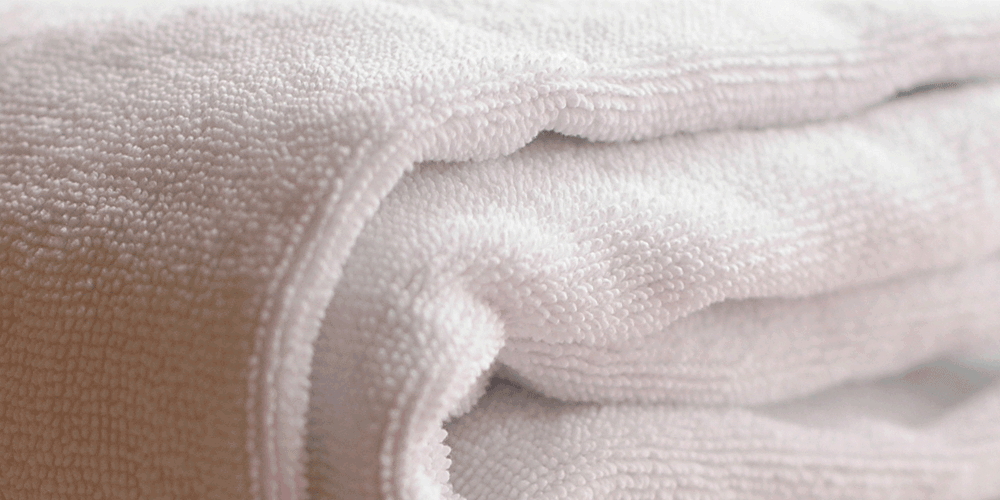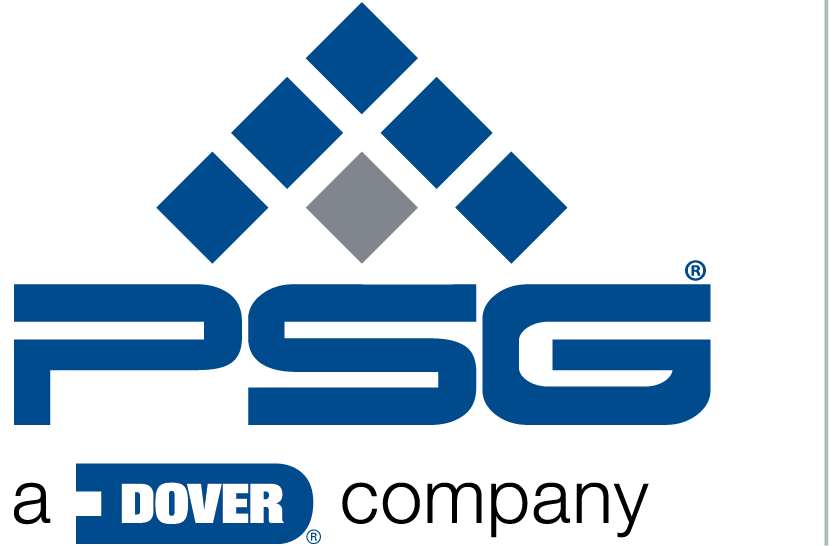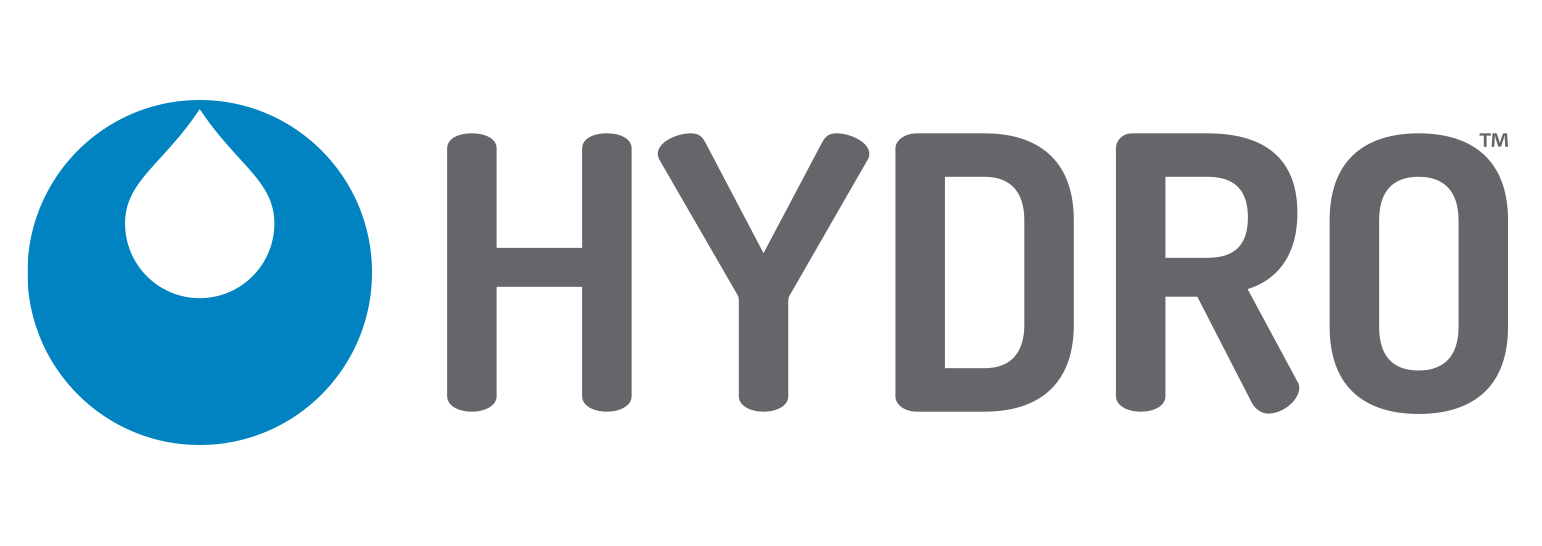Whitepaper: The Perfect Cycle

How chemical dispensing systems keep your laundry program running smoothly
Loads of Laundry
No hotel guest would be happy with a bath towel that is dirty, stiff, smelly or torn upon check-in. Similarly, a patron at an upscale restaurant would be displeased to find their table linen covered in unsightly stains. Finally, the health and safety of hospital patients can be directly linked to the sanitation of linens. Tragically, patients have died from mold outbreaks caused by the improper treatment of bed sheets. Whether linen is meant to be a bright white or a vibrant color, it’s important for businesses to always present crisp, fresh linen free of stains, odors, tears, bacteria or mold. To accomplish this, textiles must be carefully washed and dried at a well-maintained laundry facility furnished with the appropriate equipment and procedures.
According to the Textile Rental Services Association (TRSA), the U.S. commercial textile service industry processes around 15 billion pounds of laundry annually. About half of this weight is handled by hospitality businesses such as hotels and restaurants. In its On-Premise Laundry (OPL), a hotel may launder a variety of textiles, including bedsheets, towels, tablecloths, napkins and guests’ clothing. In addition to hotels, hospitals, fitness centers and spas, manufacturers and other businesses must also clean textiles. Businesses without an OPL outsource their laundry to large commercial facilities that are equipped with many appropriately sized washers, dryers and downstream equipment like presses and folders.
Professional laundry operations must deal with a wide variety of stains, including marks from dirt, grease, food, drinks, cosmetics, blood and more. With the proper equipment, commercial and industrial laundries can manage up to 100 chemical formulations to thoroughly remove stains on many types of linen. Depending on the type and size of the laundry facility, the chemicals used to tackle stains can represent 17 to 48 percent of annual operating costs, according to research from Kline & Company Inc. Because they handle such an immense volume of textile, and can experience high turnover, it’s important for laundries to implement methods to simplify and improve the laundry process, limit waste, maintain safety and keep costs in line.
The Role of Dispensers
A laundry’s yearly chemical spend can exceed $125,000, according to the study by Kline & Company Inc. Without a reliable chemical dispensing system installed to regulate dosing, costs can easily overwhelm a laundry’s bottom line. For example, when employees must manually measure chemicals, they may use too little, which may not remove linen stains effectively. When a stain remains after a wash, facilities must rewash linen and use stronger, often more expensive chemicals. This increases labor, water and utility costs, and chemical usage, while shortening the life of linen.
On the other hand, if too much chemical is used, laundries are being wasteful and unnecessarily driving up chemical costs. Too much chemical can also damage textiles and require them to be replaced more frequently, adding even more of a cost burden to a laundry operation.
To ensure that the precise amount of chemical is delivered during the wash process, laundries need easy-to-use, automated dosing systems in place. Today, most commercial laundry machines are built with connections for liquid detergents to allow laundry managers to use external chemical dispensing systems. In addition to detergents, dispensers can deliver other chemicals, including de-staining products, alkali boosters, emulsifiers, sanitizers, fabric conditioners and more.
Dispensing systems offer a variety of benefits. For example, they take the guesswork out of chemical dosing by providing the proper measurements each time. They also enhance productivity by reducing the need for rewash cycles. Accurate dosing reduces chemical waste, as well as wasted energy and water, allowing laundries to keep their budgets intact. Intelligent dispensers can utilize the on-board electronics to log and report critical data such as load weight and temperature, chemical usage or load counts. Closed loop systems also maintain employee safety because they reduce the risk of spills or contact with potentially harmful or irritating chemicals. Finally, dispensers help maintain linen quality, and thus brand image.
Selecting a System
Before purchasing a dispensing system, a facility needs to assess its size and needs. Simpler systems, such as a one-detergent push-button system for a single top-load washer, are better suited for very small operations such as an OPL at a bed and breakfast inn.
Medium to large OPLs at bigger hotels and hospitals, which must launder sheets, towels, patient gowns, dining linens and rags, have washer-extractors onsite, which can be 3-30 times larger than a traditional front-loading washer, according to the Alliance for Water Efficiency. These machines will need dispensing systems with more advanced features that can deliver numerous types of chemicals in higher volumes. Traditionally, peristaltic pumps or roller pumps are used in these situations, though increasingly, these operators are more focused on further reducing maintenance, installation and commissioning costs associated with such dispensers.
The largest operations include industrial laundries or linen supply houses. According to TRSA, most of these plants are at least 30,000 square feet in size and can process millions of pounds of laundry every year in huge tunnel washers or multiple large washer-extractors. These sites will need to install larger, central dosing systems that are built to cut costs, drive informed decision-making and ensure reliability.
When looking for a central dosing system for your large laundry operation, there are numerous must-have features and qualities. These include:
- Wireless reporting capabilities. Managers can’t be onsite 24/7, so investing in a smart dispensing system is key. System software and mobile connectivity provides laundry and chemical personnel with a closer look at key performance indicators, like formulas, volume of washes and average production rate. Access to this data allows facility managers to proactively act on issues ranging from inadequate water pressure to staff training opportunities. Remote access capabilities allow certain adjustments to be made even while offsite. This reduces errors that can impact costs and productivity.
- Reliable, durable and accurate diaphragm pumps. Although peristaltic pumps have many advantages including affordability and flexibility, natural deterioration from chemical contact can wear pump tubes down. When pump tubes lose thickness and elasticity over time, this can result in less chemical delivery if they are not regularly replaced and recalibrated, typically every three to six months. All the maintenance costs can add up; for example, a facility using six products across 10 washer-extractors will have 60 tubes. Assuming a total cost of $10 per tube every three months, this equals $2,400 per year to maintain pumps, excluding the downtime, potential to under dispense and additional space required. To avoid accurate dosing and maintenance issues, laundry managers should look for systems that require minimal maintenance.
- Multiple channel configurations. In order to remain productive, facilities that handle a high volume of linen and have numerous washers need a system that can accommodate multiple channel configurations. This enables the system to efficiently dose all products without long queues and prevents expensive delays that can arise if the system is undersized.
- Small, compact design and wall-mount option. Even large or industrial laundries will benefit from a compact and accessible dispenser. Smaller systems that can be mounted to the wall reduce the overall footprint and make installation quick and simple. Plus, it’s easy to locate potential issues and conduct regular maintenance with a single cabinet design.
- Resource-saving capabilities. According to the Kline & Company research, around 60 percent of lodging establishments already have a green laundry program in place. Plus, 95 percent of commercial laundries look for green products and services to appeal to customers. Fortunately, chemical dispensing systems can help laundries further their commitment to the environment. Laundry managers should look for a system that helps save resources like water and energy by reducing rewash rates and measuring water and chemical consumed in the dosing process.
- Manufactured by a trusted company. Look for a chemical dispensing system from a company with a rich history in dosing and dispensing innovation. The manufacturer should be committed to applying technology to improve its designs and have excellent customer service reviews. The provider should also have the expertise to help you select the best chemical dispensing system for your facility’s needs.
A Successful Cycle
Facilities that process large quantities of linen must make sure their dispensing systems are not undersized for their needs. Hydro Systems Co. is the world’s largest independent manufacturer of chemical injecting, proportioning, dispensing and medicating equipment. Its Dositec multi-washer chemical dispensing system is equipped with a range of high-quality pneumatic or electromagnetic diaphragm pumps that can dispense 10 chemicals to as many as 10 washing machines. This eliminates the need for larger individual pump stands that each require their own sets of tubes and controls. The Dositec system can also be configured specifically for tunnel washers with up to five channels.
Dositec offers remote monitoring and control capabilities that allow customers to access critical chemical data and make adjustments from anywhere an Internet connection is available. At each step in the dispensing process, the system conducts checks. For example, after it gets a call for chemical, Dositec checks for leaks and triggers an alarm if it detects one. Then, it makes sure there is adequate water supply and flow. Regular alarms can signal a need for maintenance or improvements. For instance, numerous water supply alarms might encourage operators to add a booster tank or hardware to increase water pressure.
Dositec’s software also provides reports to facilitate continuous improvement of the laundry process. For instance, the data can help facility managers understand if calibrations are accurate by comparing the amount of chemical that should have been dosed with the amount of chemical that was actually dosed. If these numbers are off, an alarm will be triggered, indicating that a recalibration may be needed. Dositec’s flow meter is incredibly accurate; with proper calibration, it can deliver +/- 3 percent of the requested dose. Some chemical vendors are so confident in its accuracy that they bill the laundry on the usage information generated by the flow meter.
Hydro’s Dositec system has provided numerous benefits to customers around the world, including Walter E. Nelson, the largest family-owned janitorial, paper and chemical distributor in the Northwest. The company implemented Dositec in 2015 to satisfy its need for a remote-access multi-washer system. The system has provided a range of positive results, including:
- Reducing chemical dispensing labor and equipment maintenance costs by approximately 80 percent
- Enhancing laundry results through real-time monitoring of key chemical dispensing data and the ability to proactively address wash house issues before they become problems
- Improving productivity by making changes remotely, rather than sending technicians to manually adjust at Walter E. Nelson’s customer sites
- Space savings, as the Dositec system is much smaller than traditional (peristaltic) chemical delivery systems
The Future of Laundry
In addition to proper selection and maintenance of chemical dispensing systems, it’s important for managers to understand how technology is evolving and the impact this will have on laundry operations. The Internet of Things (IoT) is a network of physical devices that can be accessed using the Internet and send and receive data in real time. The IoT is having a positive effect on many industries and is poised for incredible growth. In fact, recent research looking across industries reports the number of devices connected to the IoT will grow from the 15.4 billion devices in 2015 to 75.4 billion in 2025.
According to a study by the Boston Consulting Group, there are numerous use cases for the IoT that are on track to experience widespread adoption in the next several years. One of these areas, which ties closely to the laundry industry, is self-optimizing production. Connected factories and plants can rely on the IoT to track and optimize production processes in real-time. For instance, automated adjustments to dispense chemical based on feedback from a flow meter can improve quality and efficiency while reducing costs and waste.
Today’s chemical dispensers that utilize the power of the IoT are focused on remote monitoring. These connected devices alert laundry managers to issues during the wash process to reduce downtime. They also deliver data to provide greater insight about important information, such as chemical consumption. To ensure this critical information is received immediately, most facilities use a cellular modem when installing a connected chemical dispenser so that they don’t have to rely on the local WI-FI connection.
Despite offering enhanced visibility to managers, connected chemical dispensers still have room to grow and evolve. Eventually, dispensers could be used to provide predictive maintenance on downstream equipment such as the washer or on the dispenser itself by analyzing data and recommending maintenance before issues arise. Dispensers may also be able to conduct automated inventory management by integrating chemical usage data into enterprise (ERP) or customer relationship management (CRM) software packages. For example, if a system detects a certain amount of chemical usage below a threshold, it could automatically trigger an order for more chemical.
It’s likely that in addition to these improvements to dispenser technology, manufacturers of the solutions will expand their services to include analyzing and interpreting data for laundry facilities. With so much data at their fingertips, managers may be overwhelmed. Companies that can consult and educate users of IoT dispensing systems can help laundry operators and chemical suppliers run their businesses more efficiently. For example, a manufacturer may recommend additional staff training if a dispenser is reporting a high number of “unfinished cycle” alarms, as this could mean that employees are manually advancing the washer program before loads are completed.
Dispensing Done Right
Laundry operations of all sizes take their responsibilities very seriously, and thus need the right processes and equipment in place. Chemical dispensing systems are essential additions to these laundry facilities because they help eliminate waste, reduce costs, improve productivity and enhance safety. These systems also ensure that linen is sanitary and stays looking, smelling and feeling great over the course of its life.
Laundry managers should take time to research different systems so that they select the appropriate dispenser for their facility and maximize the benefits. Dispensing systems that have the numerous must-have features outlined above will reduce unnecessary headaches, as they are easier to install, use and maintain. Today, there are more advanced options available that utilize the power of the Internet of Things and provide greater visibility of the wash process. IoT-connected dispensers can significantly improve efficiency and reduce costs within laundry facilities. Future improvements will only continue to add new capabilities that will help laundries clean with confidence during every wash.

Customer Service and Technical Support
Call 1-800-543-7184 Monday-Friday 8am - 5pm EST











